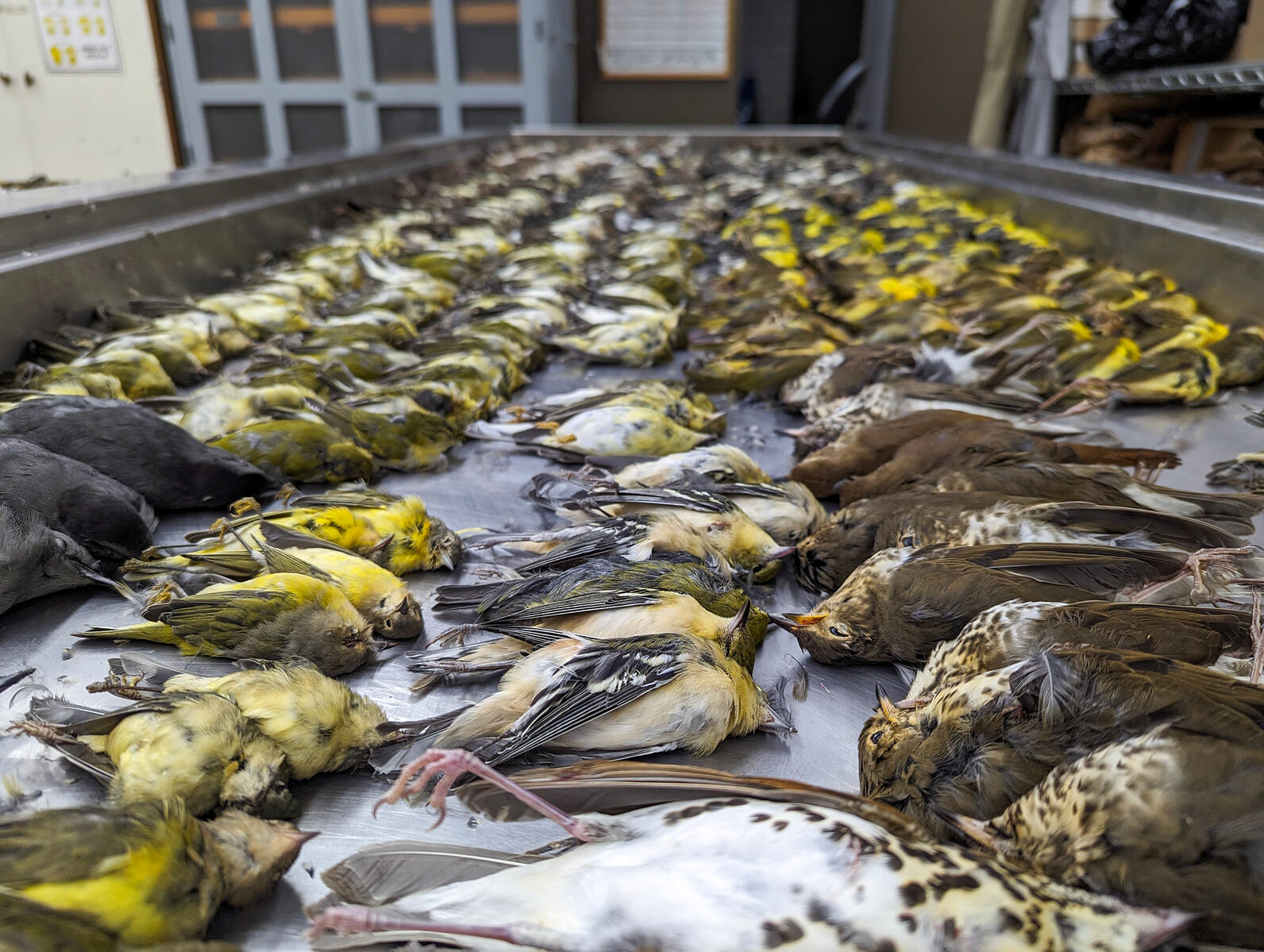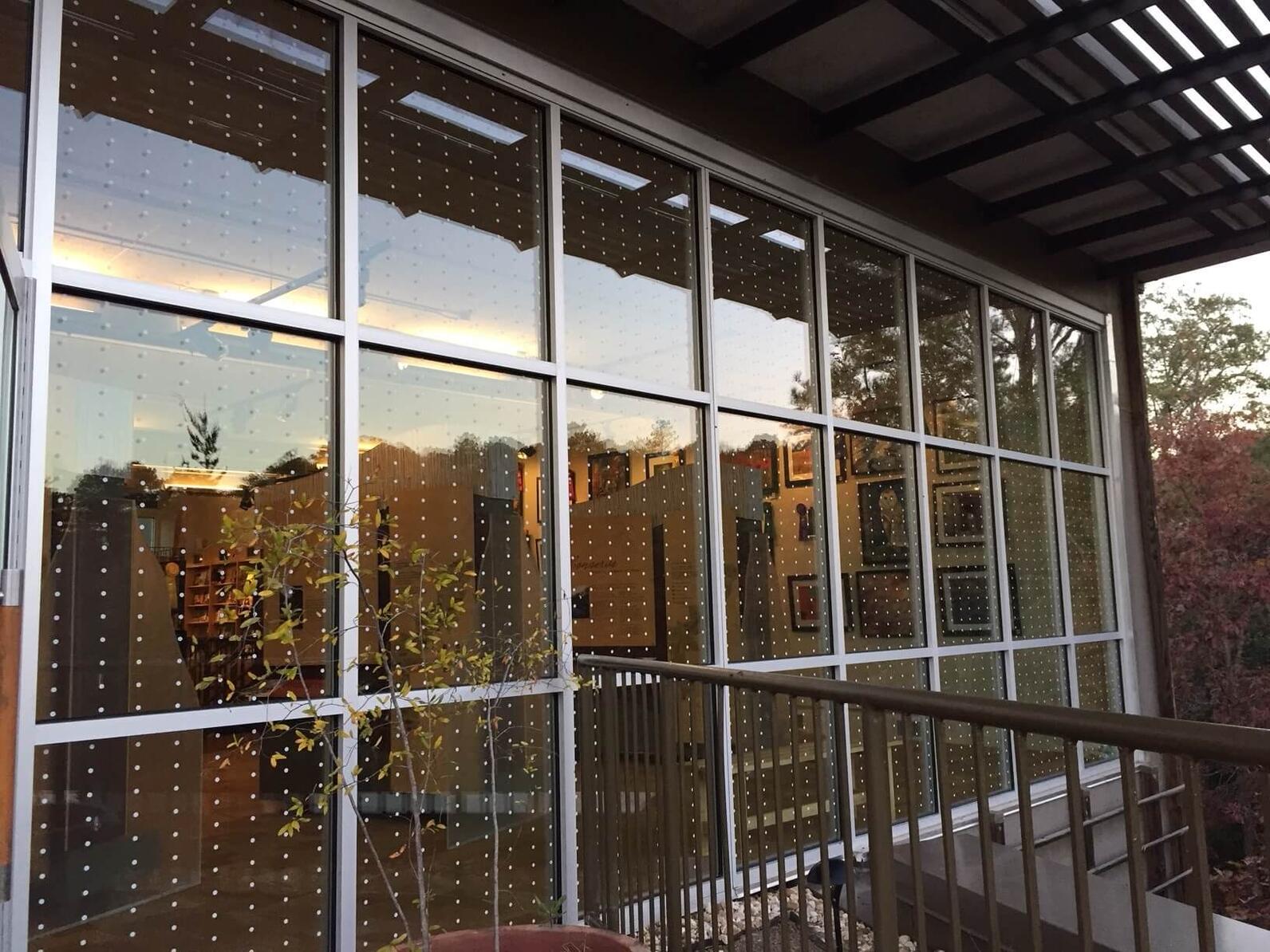This month, tragedy unfolded in Chicago as hundreds of migratory songbirds died from window collisions with a single building. Nearly 1,000 birds were collected outside of McCormick Place Lakeside Center on Chicago’s lakefront in the early morning hours of October 5, by the Field Museum of Natural History. Species included many warblers, including hundreds of Palm Warblers and Yellow-rumped Warblers, whose flights to southern North America, the Caribbean, and Central America were cut short.
The loss of this many birds is tragic and a conservation concern for birds already facing significant population declines from the cumulative effects of habitat loss and climate change. North America is home to nearly three billion fewer birds today compared to 1970 and two-thirds of North American bird species are at risk of extinction due to climate change. Climate change also affects the timing of bird migration and the availability of suitable habitat that birds need.
This mass collision event followed several weeks of southern winds that halted millions of migratory birds from flying south. Once weather conditions improved, the floodgates opened, filling the skies across the Great Lakes with nearly 100 million birds. When once again weather conditions worsened just south of Chicago, it caused a migration “fallout,” forcing birds to hunker down and stay-in-place until the weather conditions improved. According to BirdCast, this fallout caused the Chicago area to experience a peak migration traffic of just under 1.5 million birds that night.
While collision events as large as this one are rare, bird collisions are not. They are a leading cause of bird mortality, and up to 1 billion birds are killed yearly in the U.S. from collisions alone. Chicago is the deadliest city in the U.S. for migrating birds due to a combination of light pollution and its location in the middle of the Mississippi flyway, a large migration route that brings more than 300 bird species through the region each year, the majority of them flying at night.
Part of what makes bird collisions so tragic is that they’re preventable. The biggest leading contributors to these deaths are artificial light at night, which can be disorienting for migrating birds flying at night, and reflective and transparent glass. A study found that turning off just half of the lighted windows during spring and fall migration could reduce bird deaths on Chicago’s lakeshore by 60 percent.

Opportunity to Take Action
If there’s a silver lining, it’s that this incident could help ignite a spark of action to save birds across Chicago and other urban areas. Audubon has seen mass collision events motivate cities to act. In 2020, more than 1,000 birds died in a mass collision in Philadelphia. In response, conservationists from around the area banded together to launch Bird Safe Philly, to make sure a similar event never takes place again. Last year, a similar event took place in New York, when more than 220 migrating birds died after striking windows. This led local Audubon chapters and partners to launch a Lights Out Program that advocates for protections that will save birds.
Audubon works through our chapter network and with partners and municipalities to bring the Lights Out program to communities across the Great Lakes and the nation. Chicago Audubon Society's Lights Out Program launched in 2000 was the first in the nation. The program, which calls on building managers and the public to reduce light pollution, saves the lives of 10,000 birds annually. This mass collision event is a wake-up call to building owners and managers to participate in Lights Out, and turn off excess lighting during the months migrating birds are flying.
It’s also important to make windows safer for birds. Birds don’t see glass the way we do and will fly into windows and other surfaces that reflect the surrounding landscape, or try to fly through glass that appears transparent and invisible. Collisions with glass occur year-round, day and night. Luckily, there are simple steps to help make windows safer, including creating patterns on the outer surface, making glass appear opaque, or putting up physical barriers. These methods, when installed properly, can greatly reduce window collisions. The Javits Center in New York, was recently retrofitted with bird-safe glass, which reduced collisions by 90 percent.
While Chicago’s buildings are dangerous for birds, its natural areas provide refuge for birds to rest on their long and difficult journeys. We can further help protect birds by conserving the places they rely on. Audubon Great Lakes is working with managers and other stakeholders across the coastal region of Illinois to conserve migratory stopover habitat.
Advancing Policies to Protect Birds
There’s a growing political push to make more buildings bird-safe. Illinois and Chicago joined Minnesota, New York City, and several cities in California that have passed bird protection legislation.
The state of Illinois took an important step to minimize the impact of our built environment in 2021, when Governor Pritzker signed the Bird Safe Buildings Act (HB 247), which requires bird-friendly design to be incorporated into the construction and renovation of state-owned buildings in Illinois. Similarly, Chicago City Council passed O2020-136, an ordinance to make bird-friendly design a significant part of future sustainability planning as applied to building construction.
Despite these important strides, mass mortality events like this one still happen and will continue to happen without further action. Broader changes that take into account existing structures are needed to protect even more birds.
One opportunity is the Bird Safe Buildings Act, reintroduced by Reps. Mike Quigley (D-IL) of Chicago, and Morgan Griffith (R-VA), which will promote bird-friendly materials and design features at federal buildings. Audubon is urging the Transportation and Infrastructure Committee to advance the bill to ensure that our public buildings are bird-friendly.

How You Can Help
Research shows that some birds are more likely to hit buildings than others. Some of these birds, dubbed “super-colliders,” are headed to Chicago and the Great Lakes region in the next few weeks, including American Woodcocks and White-throated Sparrows. Take these simple steps to protect birds migrating this fall.
-
With 44 percent of bird collisions occurring at residences, making your home bird-friendly could have a direct positive impact on birds. Take these simple steps to make your home or workplace more bird-friendly.
-
Urge your U.S. Representative to co-sponsor and support the Bird Safe Buildings Act, to ensure that the federal government leads by example to protect birds.
-
Pledge to stand with Audubon as we call on building owners, managers, and homeowners to turn off excess lighting during the months of bird migration to help ensure birds have a safe passage between their nesting and wintering grounds. Take the Lights Out Pledge
-
Interested in becoming a bird collision monitor? Reach out to your local Audubon chapter to see if they have a monitoring program, or search for a Global Bird Rescue Team near you. No monitoring team near you? You can keep a look out for window collision victims in your community. Report a dead bird using the Global Bird Mapper, and learn how to help survivors get the care they need.
Each fall and spring millions of birds rely on the Great Lakes region as refuge during their long migration journeys. By advancing policies that protect migrating birds, and taking simple actions to make our workplaces and homes safer for birds, we can help prevent needless bird deaths and ensure that birds make it safely to their destinations.






